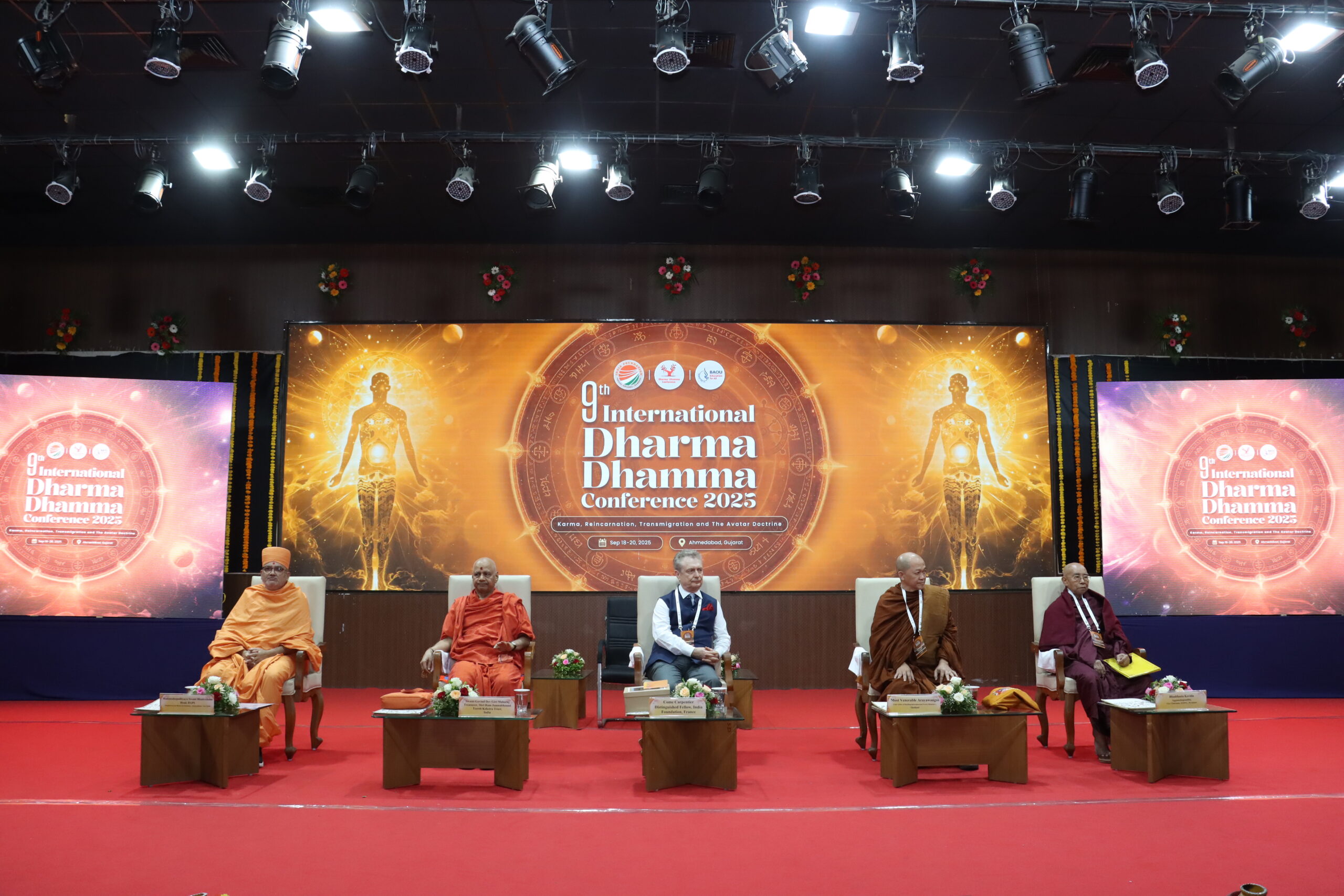On 6 June 2017, ahead of the start of the SCO summit in Astana in Kazakhstan, a meeting took place between Prime Minister Narendra Modi and President Xi Jinping of China. The meeting, coming on the heels of a series of contentious issues between the two countries was cordial, giving rise to the hope of smoothening of diplomatic relations. The preceding months had seen a distinct cooling of relations, with Beijing continuing to block New Delhi’s bid seeking membership of the Nuclear Suppliers Group, stonewalling India’s attempts to sanction JeM chief Masood Azhar at the UN and renaming places in Arunachal Pradesh. India, on its part, boycotted China’s high-profile Belt and Road Forum held in Beijing in May, in which 29 world leaders took part, much to the former’s chagrin, as the China-Pakistan Economic Corridor (CPEC), which is an important constituent of the project, passes through Indian territory illegally occupied by Pakistan.
The meeting on the sidelines of SCO summit, however, flattered to deceive. Within ten days, on 16 June 2017, a Chinese road-construction party with heavy equipment, accompanied by soldiers of the People’s Liberation Army (PLA) of China, intruded into the Dolam plateau and started work on extending an unmetalled track in Bhutanese territory. Personnel from the Bhutanese Army who arrived at the scene found themselves unable to stop the Chinese, subsequent to which troops from the Indian Army moved into the area, and stopped the road construction. The face-off between the Chinese and the Indian troops has continued thereafter, with neither side prepared to budge from their position.
The area in contention — the Dolam plateau — is however Bhutanese territory, though China lays claims to it, based on their interpretation of an Anglo-Chinese convention of 1890. Bhutan was however not a signatory to the above convention, which in any case has been overtaken by later day agreements with Bhutan of 1988, 1998 and 2012, which clearly advocate the maintenance of status quo in the disputed areas till the issues are resolved through dialogue. More than two dozen meetings have taken place between Bhutan and China on this issue without making any headway. China’s attempt to build a road through the Dolam plateau is thus an attempt to change the status quo and is in violation of the agreements between Bhutan and China.
An understanding of the geography of the place is important to grasp the ground situation. The Chumbi Valley in this region forms a wedge into India, with Sikkim to the West and Bhutan to the East. The trijunction between India, Bhutan and Tibet in this region is at Batang La. South of Batang La is the Indian post Doka La. Further South, about 6.5 km from Batang La is Gymochen, which China claims as the trijunction and on which it bases its claim to the Dolam plateau. To the East of Gymochen runs the Jampheri ridge, a feature of great strategic significance, which India and Bhutan believe China is having an eye on. As per the agreement between the Special Representatives of India and China in 2012, the two sides have to maintain the status quo until their competing claims are resolved in consultation with the third party, which in this case is Bhutan. Gymochen is 20 km crow flight distance from the West Bengal border.
North East of Doka La, is another feature called Doklam, which has no contiguity with India and which must not be confused with the Dolam plateau. The Doklam plateau is about 30 km away from the stand off point at Dolam, near Doka La. The Indian Ministry of External Affairs and the Embassy of Bhutan in New Delhi refer to the location of the standoff as the Dolam plateau, which is in the Doklam area.
India is rightly concerned with the Chinese attempts at unilaterally altering the status quo. From southern tip of the Chumbi Valley, Jalpaiguri is but 99 km crow flight distance. This makes India extremely vulnerable as the entire Northeast India can be cut off from this point. Chinese build up in this region is dependent on road communications. The Chinese have built a class 60 road from Lhasa to Gyantse, which extends deeper inside the Chumbi Valley. Several unmetalled tracks emanate from there, one of which comes up to a point close to Doka La. This 20 km long track is classified as a class-5 track, meaning it can take light vehicles. At the end of this 20 km track, is a “turning point”, a wider area where large vehicles can reverse and return. This turning point is a few metres away from the Indian Army post at Doka La, around 3.5 km short of Gymochen, and approximately 3 km from Batang La and is the place of the present standoff between the two countries. Chinese attempts to extend the road network in Bhutanese territory pose a threat to India which India will be naive to allow, especially as such an attempt amounts to altering of the status quo, which till now has helped to maintain peace in the area. Chinese military patrols have been regularly coming up to the turning point on the Class 5 track. Chinese graziers often come up to the Torsa Nala. Chinese military patrols have also been known to go almost up to the Jampheri ridge, but this is rare. In a sense, while the de jure border is aligned with Batang La, the de facto border has been at Doka La.
The last three years under the NDA government have seen a markedly different Indian government, which is willing to protect its interests. India’s diplomatic outreach to strengthen its ties with the US, Japan, South Korea and Israel marks a major shift from earlier years when India was content to remain a backroom player. To this end, India’s efforts to get into the nuclear club and to the UN’s highest decision-making body are a work in progress.
The Indian focus on revitalising its economy is proceeding apace, with India now the fastest growing economy in the world, displacing China from the top spot. While India is still far from competing with China in the economic and military sphere, it remains a challenge to China to achieve regional hegemony, in line with a Chinese saying that one mountain can have only one tiger. That role China has abrogated for itself, which brooks no space for any other. Indian absence from the Chinese Road and Belt project thus was not viewed favourably by China, which expected India to fall in line with its initiative. This explains consistent Chinese attempts to give support to Pakistan and to obstruct India’s entry into the Nuclear club and to the UN Security Council.
So, what of the future? While both sides have agreed to a troop withdrawal on 28 August, thus deescalating the current inpase, India-China relations are fed by wider geo-strategic concerns. In the instant care, China has upped the ante by closing the pilgrims route to Mansarovar via Nathu La pass and through its state controlled Global Times paper, issued veiled threat to India that it could review its policy on Sikkim and Bhutan. this ofcourse could have led to giving India the option to reexamine its position on Tibet, which in any case was an independent kingdom and acted as a buffer between India and China.
While a conflict on a localised issue will benefit no one, least of all India and China, it is incumbent on the part of the Chinese to respect Indian sensitivities in the area and to adhere to the rule of law. For India, the best remedy to avoid war is to show the will and the resolve to fight for the preservation of Bhutan’s territorial integrity.
(Apoorva Goel is working as a research intern with India Foundation. She is pursuing her B.Com (Hons.) from Shri Ram College of Commerce, New Delhi. This article has been written with inputs from Maj Gen. Dhruv C. Katoch)
(This article is carried in the print edition of September-October 2017 issue of India Foundation Journal.)



